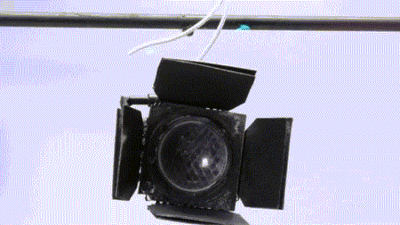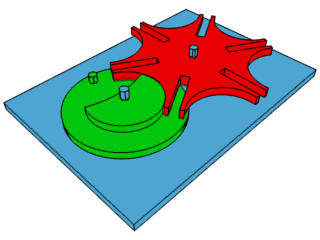This blog is dedicated to inform people of random things that could be useful in their lives, varying from simple DIY projects to step-to-step experiments. From social facts to bizarre stories. From learning new phrases in another language to political courses. It's random things, let's be creative
Don't wanna be here? Send us removal request.
Quote
Te dedique toda mi vida, y ahora que te fuiste, no tengo nada
0 notes
Text
“What happens when people open their hearts?“
"They get better.”
~ Haruki Murakami, Norwegian Wood
386 notes
·
View notes
Text
my parents aren’t teaching me life lessons.
#i need some adults to TEACH ME SHIT ABOUT LIFE
1M notes
·
View notes
Photo

Ecuador has been a great deal lately on the news, and it's not a surprise that Ecuador's fraternity and good-will keeps moving the country forward. However, resources are missing and there is a lot that is needed, that's where you make a part, you can help Ecuador by donating any quantity you see fit, either way, Ecuador will be growing again thanks to you. For more info about the project, click the link below https://igg.me/at/c0PIsPMZP1E Please share this, that would help a lot

#Ecuador#Ecuador earthquake#poor#poverty#Latin America#Quito#hope#love#donations for Ecuador#donations#building houses for Ecuador#building#home#homes#generosity#indiegogo
2 notes
·
View notes
Text
Has anyone any experience with learning Arabic on there own? I need some advice and good sources. 😊
239 notes
·
View notes
Photo





Théodore Géricault, The Raft of the Medusa (1818-1819). Louvre.
On this day in 1816, the French frigate Méduse ran aground. Gericault’s painting illustrates the aftermath of the actions of the ship’s inexperienced and ill-fitted captain, Viscount Hugues Duroy de Chaumereys, who was appointed under the Bourbon government. The Méduse’s lifeboats were filled with the higher-ranking officials, including the captain and Julien-Désiré Schmaltz, the newly appointed governor of Senegal. A crudely constructed raft was made for the remaining 150 people: soldiers, civil servants, and settlers.
Helplessly overcrowded, the raft was tied to the lifeboats and was meant to be pulled along with them to safety. When the ocean became too turbulent, the raft was seen as a burden to the lifeboats and on July 5, the captain ordered it to be set adrift.
“At the first moment we did not really believe that we had been so cruelly abandoned.” - Survivors J. B. Henri Savigny and Alexandre Corréard
Chaos ensued.
First, there was mutiny as soldiers, officers, and others on board the raft fought and rioted. In tumultuous waters, people violently scrambled to get to the center of the raft, where it was most stable. Murder and suicide became commonplace. On the eighth day adrift, the weakest and the sick were pushed into the ocean and left to die. Once the food supply ran out, those desperate for nourishment resorted to cannibalism.
The raft was discovered by the Argus on the thirteenth day. There were only fifteen survivors.
“…. Imagine fifteen unfortunate men, almost naked; their bodies and faces disfigured by the scorching beams of the sun; ten of the fifteen were hardly able to move; our limbs were excoriated, our sufferings were deeply imprinted on our features, our eyes were hollow, and almost wild, and our long beards rendered our appearance still more frightful; we were but the shadows of ourselves.” - Survivors J. B. Henri Savigny and Alexandre Corréard
The captain of the Medusa was demoted, imprisoned, and disgraced for his actions.
Géricault’s carefully constructed masterpiece was displayed at the Salon of 1819 under a new name, The Shipwreck, so as not to stir up controversy or heated political discussion. But this new name also gave the work an anonymity that made it a universal symbol of suffering.
“Here was an event that turned upside down the revolutionary and Napoleonic heritage of reason and of the nobility of death, and one that could expose the darkest sides of human suffering.” - Robert Rosenblum, 19th-Century Art (1984).
Read an eyewitness account written by two survivors: Narrative of a Voyage to Senegal in 1816 by J. B. Henri Savigny and Alexandre Corréard.
647 notes
·
View notes
Photo










If you don’t like eating a particular fruit or vegetable, this science-meets-art mash up is about to blow your mind.
Constructed by MRI technologist Andy Ellison at Boston University Medical School, Inside Insides is a collection of MRI images of foods, veggies and flowers turned into mesmerizing animated pictures, or gifs to be exact.
Keep reading
276 notes
·
View notes
Photo










Wonderful horse photographs by Wojtek Kwiatowski. A variety of astonishing images for your eyes
#horses#animals#photos#photography#tumblr photographs#artists#art#nature#ambient#backgrounds#colors#mystery#picture#images#eye-astonishing
4 notes
·
View notes
Photo

Forensic psychologists identify a cycle that a serial killers goes through when planning and executing a murder. It is generally six phases - 1.) The Aura Phase: This is where the motive to kill begins. A serial killer fed up with the stressors of real life will slowly begin to shift into a fantasy world. Here, the ideas of murder will begin to flourish; fantasies of the impending satisfaction and details of the killing will become an obsession. If the killer drinks or does drugs, use will increase tremendously. 2.) The Trolling Phase: Now the killer will begin to lurk and “troll” around for a potential setting - and potential victims for their crime. They usually seek areas that they are familiar and comfortable with. 3.) The Wooing Phase: Kinda self explanatory. The killer has focused in on his/her potential victim. Now they work on luring the individual in, whether through grooming, charming, or gaining their trust. The wooing phase leads to… 4.) The Capture Phase: Again, self explanatory. After gaining a victim’s confidence, the killer captures them. They are now in almost complete control of the individual. 5.) The Murder and Totem Phase: The killer’s vision is finally fulfilled. They finally indulge in a murder, satisfying themselves in whatever way they see fit - either for sexual, excitement, or financial/material gratification. This provides the ultimate high; a killer feels in control of his/her life in a way that is impossible anyway else. But the high cannot last forever, and that is why many serial killers take an extra step and keep some kind of totem. Whether it’s a photograph of the victim, a piece of clothing, or even a body part, many keep these little charms to try to lengthen out the feeling. 6.) Depression - But even a totem is not enough. Soon the killer snaps out of the delusion. The victim was a brief break from a reality, and depression sets in. We have now come full circle! Because the serial killer will soon grow exhausted and fall back into the Aura Phase, beginning the cycle again.
#forensics#Sherlock#Sherlock Holmes#Holmes#criminology#criminalistics#psychology#forensic sciences#serial killers#killing#die#criminal#diseases
6 notes
·
View notes
Photo
Ladies and gentlemen, the star bucks origin








1M notes
·
View notes
Photo









The best quotes of Harvey Specter, Suits Great life-tips that you will surely find them eye-opening and also, an incentive to start a hell of a ride
#suits#Harvey specter#quotes#series#USA#law#lawyer#Netflix#tips#business man#business#gentleman#gentlemen#men
4 notes
·
View notes
Photo




The wonderful Tuscany, Florence The birth of the Italian renaissance
#Italy#landscapes#Tuscany#Florence#travel#Europe#tourism#arquitecture#medieval#old age#Renaissance#history#art
5 notes
·
View notes
Link
Lock picking has many negative connotations associated with it and it’s understandable why. The very essence of lock picking is to undermine and compromise security, which is commonly associated with criminal activity. But in reality, the high majority of lock pickers are either hobbyists or those who want to understand and better their own security. Regardless of why an individual chooses to learn the craft of lock picking, one thing is certain. To the lock picker, the world is an open door and to the survivalist this can mean everything. Here are a few examples of why this skill is valuable.
1 note
·
View note
Photo

How the Geneva Drive (the mechanical step that makes the second hand on a clock work by turning constant rotation into intermittent motion) works.
575K notes
·
View notes








